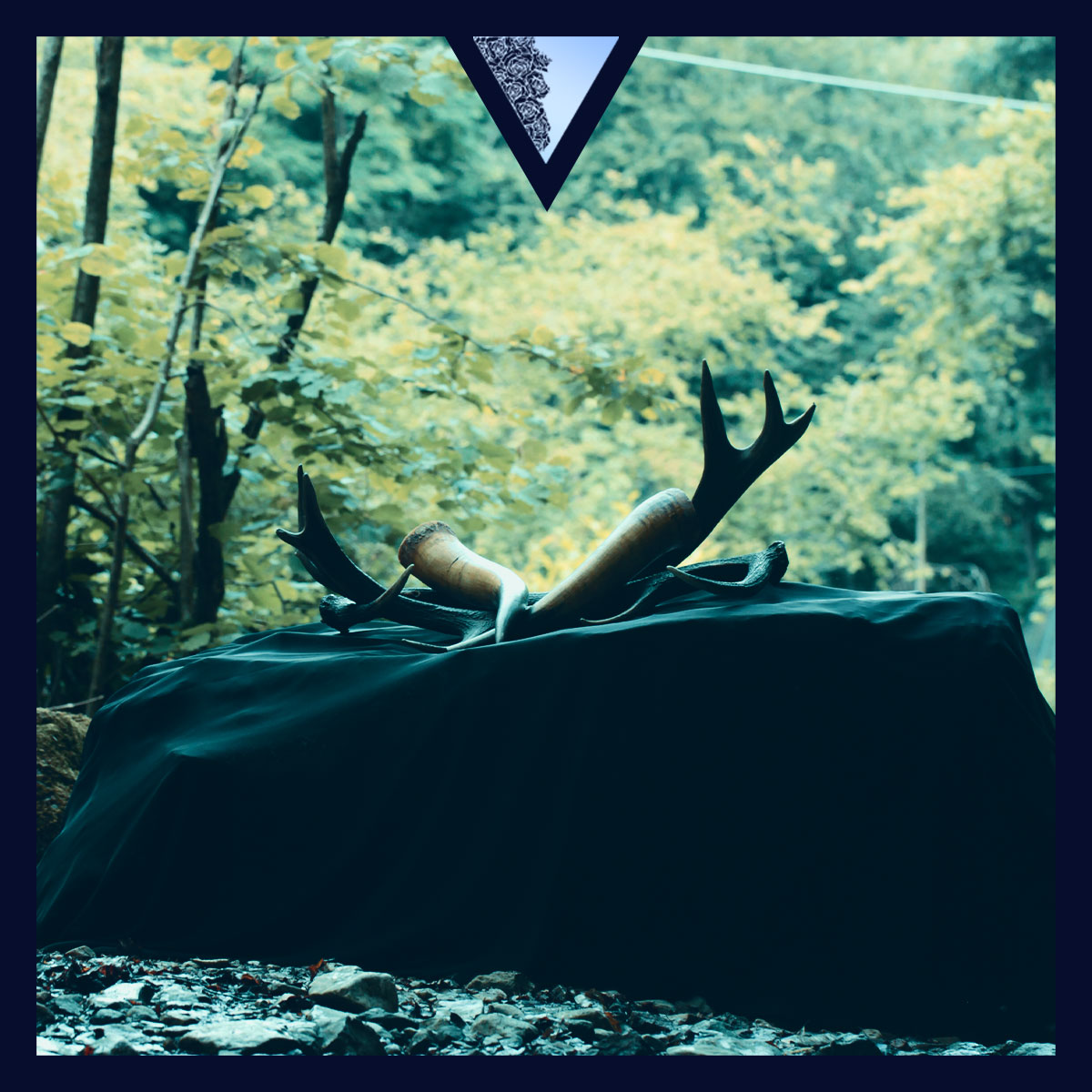
Under this name a high-level meeting is revealed for all lovers of dark, ritual and spiritual climates between AimA (Les Jumeaux Discordants, Daimatland) and Evor Ameisie (Camerata Mediolanense, NG), accompanied by Diego Cinquegrana on field recordings and keyboards. We know their penchant for haunting, possessed, alternately ethereal or demonic music, and fans will not be disappointed. Quite the contrary. The musicians show themselves here particularly inspired, carried by the pagan beliefs, the sounds of nature, the Orphic songs and the great poetic themes (the night, the creation …).
Beginning on a hymn to Dyonisos, the album adopts tribal percussions and songs which are like so many waves, hypnotic incantations, dense sound dressing and ritual power which could evoke certain works of Swans and Jarboe. Night then takes over (“To Night”), between hoots of owls, funeral piano and enveloping and melancholic voices. The tone is more neoclassical with Annamaria Bernadette Cristian’s delicate cello, but also more restless. The musicians know how to create atmospheres where the imagination takes precedence. “To The Furies” returns to an apocalyptic intensity, and these pagan chants are reminiscent of the spirit of The Moon Lay Hidden Beneath A Cloud or Hagalaz Runedance. Ultimately Camerata Mediolanense was part of this scene in the 1990s, so it makes sense that traces of it can be found.
“To Sleep” develops ancestral, luminous beauty. This time we are eyeing more the side of the universe of Dead Can Dance and Ataraxia, before returning to paralyzing and chilling songs with the incredible “Hyle the Chant of Creation”, one of the peaks of the disc. When the project launches into terrifying atmospheres, they reach perfection. “To Corybas” is among the other great moments of the album. Three heady synth notes, a few toms and string sounds, electronic sound effects, and the magic of Evor and AimA’s intertwined voices take care of the rest. The song could last for hours as we reach the trance. “To the Fates” digs the furrow of a menacing abstraction as possible. The sinister cries of AimA mingle with drones and dark ambient doldrums as the voice of poet Angelo Tonelli emerges. The calm, elegiac, comes to close this fascinating journey (“To The West Wind”) where the choirs and songs have transported us far, as much in the primitive, cavernous and unknown forces as in the most cottony ether. Great art.

Recent Comments